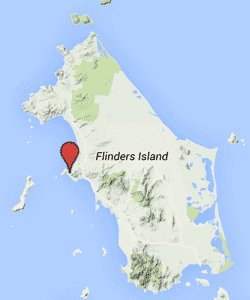Exploring roads less travelled in the cooler parts of Australia and New Zealand
Home Articles Places Categories Videos Maps About Sitemap

The uncrowded beauty of Flinders Island can delight the modern visitor, however its history contains a dark chapter. With mixed feelings I set off to visit the island's abandoned settlement of Wybalenna. That is where a remnant of Tasmania's original people - those who hadn't been eliminated or kidnapped - were exiled as part of a tragic process. One which nowadays might be described as genocide.
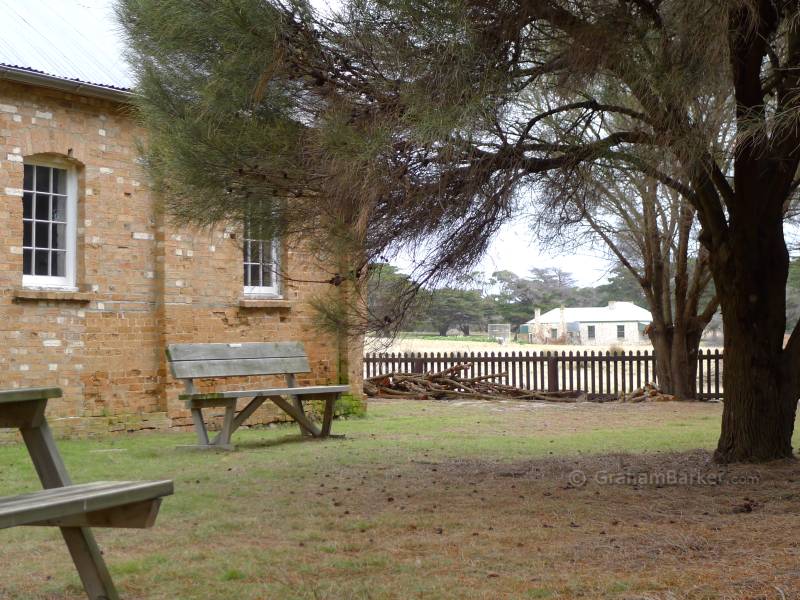
The first day I visited Wybalenna was suitably bleak. Sombre skies and a biting chilly wind fuelled the feeling of melancholy I felt while contemplating the experiences of the Tasmanian Aboriginals on that spot. A proud and successful race virtually sent to die out, in a windswept valley on an island away from their home.
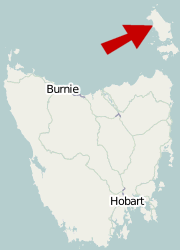
Allow me to set the scene. The Aboriginal peoples occupied every corner of Australia, including Tasmania, over 40000 years ago. They lived sustainably with sophisticated culture for thousands of generations. Then along came white settlers who considered the land unoccupied, and wanted it for themselves. As with colonisation stories the world over, there was conflict between the long-established residents and the newcomers.
In Tasmania, Aboriginal people were shot and their children stolen, with white casualties too. After a period in the 1820s known as the black wars, Governor Arthur implemented the "Black Line", whereby a line of men moved across Tasmania from one end to the other with the unrealistic aim of driving what was left of the Aboriginals into two peninsulas. A bit like rounding up cattle, except that it didn't work.
To deal with the issue, George Augustus Robinson suggested protecting the remaining Aboriginal people by resettling them away from the mainland, with food, shelter and clothing provided. Mr Robinson was generally trusted by the Aboriginals, and from what I've read appeared to have had some good intentions ... when compared to his 19th century contemporaries. Even if some of his actions appear misguided in hindsight.
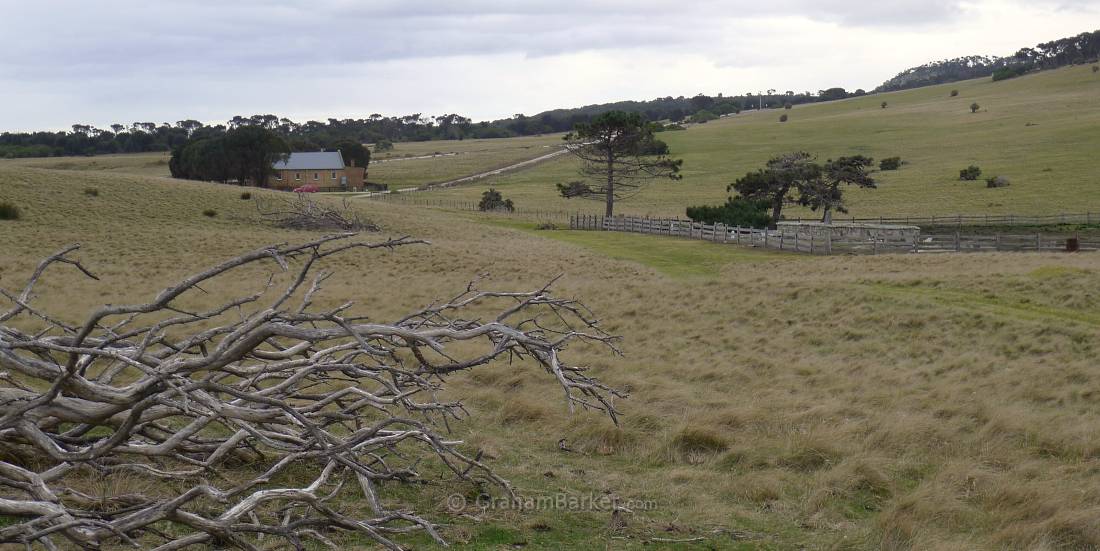
The valley where the Wybalenna settlement once stood
His plan proceeded, and by 1835 over 200 Aboriginal Tasmanians were moved - what were thought to be the last direct descendants of the original inhabitants. They were transferred to the west coast of Flinders Island, to a new settlement named Wybalenna - meaning "black man's houses".
There isn't much left of the settlement today. I wandered around the restored chapel and the small cemetery, having to imagine the living places and activities which once occupied the surrounding empty space.
The small chapel and its grounds serve as a monument to one of the stated intentions of the resettlement - to educate the natives and make them "like civilised people". Because they weren't thought of as civilised by the white people back then.
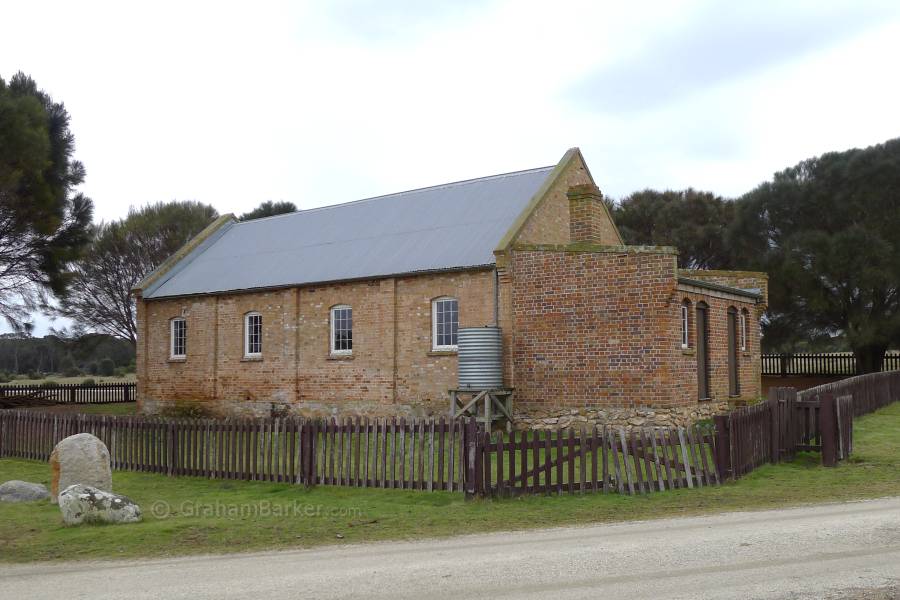
Restored chapel at Wybalenna
Education may have had some merit, but trying to force the Aboriginal people into a European cultural mould didn't work. The lack of freedom, separation from their culture and removal from traditional homelands didn't do their mental health any good. Combine that with disease, poor shelter and inadequate rations, and by 1847 the were only 48 survivors left. Their reward was to be shipped to Oyster Cove near Hobart where it was thought they might eventually die out, after having had their children forcibly removed.
I wandered away from the chapel, to the gentle crest of a rise commanding extensive views across Bass Strait. On a clear day, parts of north-east Tasmania are visible from here. I reflected on how the resettled Aboriginal people might have felt ... seeing visual reminders of the home they yearned for, but had been removed from, haunted by fresh memories of seeing their civilisation devastated. Even today we are only beginning to appreciate the depth of the connection the Aboriginal people have with their land.
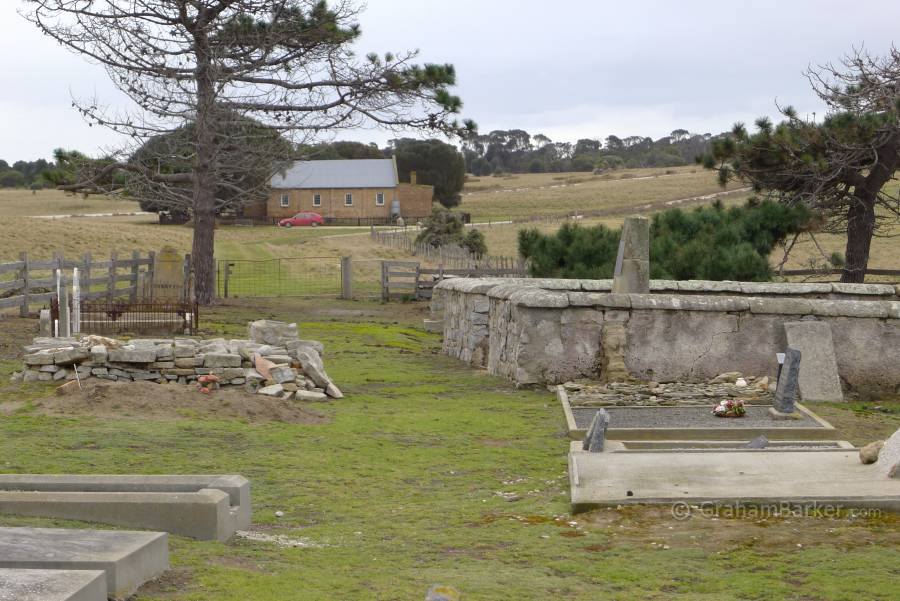
Wybalenna's small cemetery
Back down the hill, I perused the small cemetery. There aren't many headstones, and I couldn't help noticing the names on them all had a European flavour. If most of the Aboriginal residents died here, where were they all buried? The answer came on a single plaque, which reads:
"Erected by the junior farmers of Flinders Island to commemorate approximately 100 Tasmanian Aboriginals buried in this vicinity of Wybalenna 1833-1847"
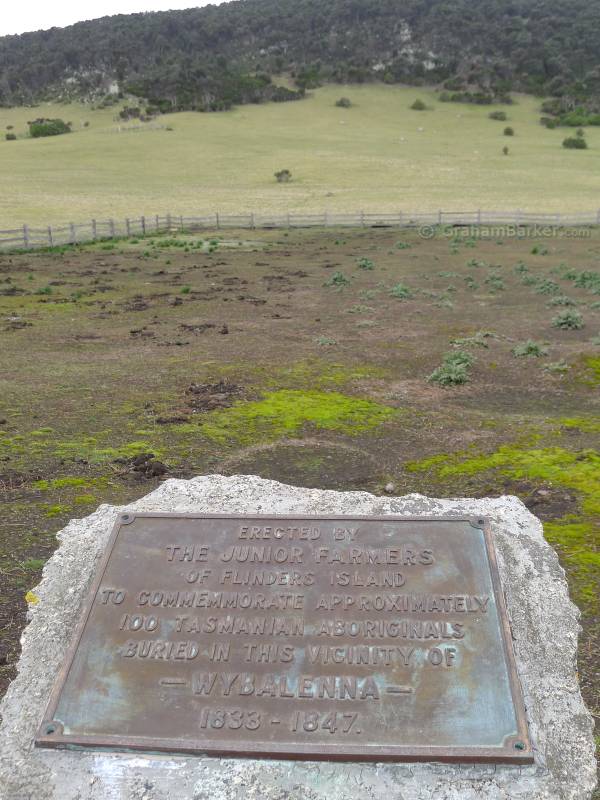
So a select few got proper graves, and the burial places of the Aboriginals - who the settlement was supposed to exist for - were somewhere "in this vicinity", unmarked and unacknowledged. For me this summed up very well the lack of respect given to the Aboriginal people.
I passed nearby on another day and paid Wybalenna a second visit. The weather was more bright and cheerful, as it had been for most of my stay on the island. Yet the location still felt bleak. It's not an unattractive spot, but knowing its role in the mistreatment of Australia's original inhabitants somehow taints it.
But there are positives too. The efforts to wipe out Aboriginal Tasmanians failed - they didn't die out, as many of us were taught in school and some still believe. Despite their displacement and mistreatment, Tasmania's Aboriginal people survived and are still with us today ... a continuation of the oldest living culture on earth. Wybalenna may be a sad chapter, but it's also part of a survival story.
Despite the dark aspects, I'd recommend a visit to Wybalenna for anyone travelling to Flinders Island. What remains of the settlement gives an insight into a part of our history which for too long was swept under the carpet. This, and the low-key seldom-visited nature of the place, make it very different from any other historic site in Tasmania.
Some relevant sections from "Companion to Tasmanian History" by the Centre for Tasmanian Historical Studies, University of Tasmania:
Aboriginal life pre-invasion - from settlement during the ice ages until the European ships arrived
Wybalenna - history of the site on Flinders Island
Oyster Cove - where the Flinders Island survivors were taken
